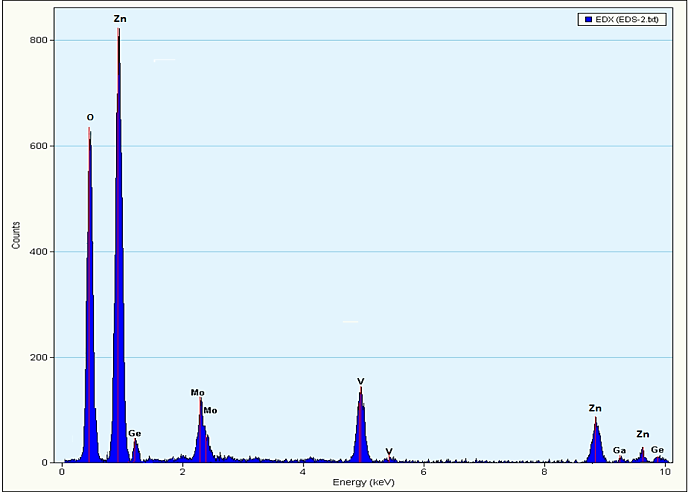Densification Behavior, Microstructure, and Property of ZnO with Multi-Oxides Glass Addition at Different Sintering Temperatures
DOI:
https://doi.org/10.46604/peti.2020.3938Keywords:
ZnO, glasses, densification behavior, dielectric constantAbstract
Zinc Oxide (ZnO) mixed with various amount of glasses were sintered at different temperatures. The densification behavior of zinc oxide with glass addition and its microstructure and dielectric constant sintered from 900° to 1200°C have been investigated. A unique glass composition contained GeO2, MoO3, and V2O5 (GMV) was designed to act as the sintering aid to enhance the densification and to adjust the dielectric constant of ZnO. The effect of sintering temperature on the densification behavior and dielectrics properties of ZnO was investigated by dilatometer, x-ray diffractometer, scanning electron microscopy and LCR meter. The glass additive formed a thin continuous liquid phase and rearranged ZnO particles into a dense microstructure at relatively low temperature. The dielectric constants of glass added ZnO ceramics were found to vary with the glass concentration and sintering temperature.
References
D. Peinsipp and A. H. Pecina, “Temperature behavior of ZnO varistors before and after post sintering heat treatment,” Materials Letters, vol. 43, no. 5-6, pp. 295-302, May 2000.
R. Kumar, O. Al-Dossary, G. Kumar, and A. Umar, “Zinc oxide nanostructures for NO2 gas-sensor applications: a review,” Nano-Micro Letters, vol. 7, no. 2, pp. 97-120, 2015.
A. M. Lerer, P. E. Timoshenko, and T. Y. Chernikova, “Dispersion characteristics of optical waveguides based on ZnO nanorods,” Journal of Communications Technology and Electronics, vol. 61, no. 6, pp. 619-623, June 2016.
J. Bao, M. A. Zimmler, and F. Capasso, “Broadband ZnO single-nanowire light-emitting diode,” Nano Letters, vol. 6, pp. 1719-722, 2006.
Y. H. Chiu, K. D. Chang, and Y. J. Hsu, “Plasmon-mediated charge dynamic and photoactivity enhancement for Au-decorated ZnO nanocrystals,” Journal of Materials Chemistry A, vol. 6, pp. 4286-4296, 2018.
J. M. Li, Y. T. Wang, and Y. J. Hsu, “A more accurate, reliable method to evaluate the photoelectrochemical performance of semiconductor electrode without under/over estimation,” Electrochimica Acta, vol. 267, pp. 141-149, March 2018.
J. M. Li, H. Y. Cheng, Y. H. Chiu, and Y. J. Hsu, “ZnO-Au-SnO2 Z-scheme photoanodes for remarkable photoelectrochemical water splitting,” Nanoscale, vol. 8, pp. 15720-15729, 2016.
Y. J. Cheng, L. Bai, G. Yu, and X. Zhang, “Effect of particles size on dielectric properties of Nano-ZnO/LDPE composites,” Materials, vol. 12, pp. 1-14, January 2019.
M. D. P. Ahmad, A. V. Rao, K. S. Babu, and G. N. Rao, “Effect of particles size on dielectric properties of Nano-ZnO/LDPE composites,” Materials Chemistry and Physics, vol. 224, pp. 79-84, 2019.
S. Nishgaki and J. Fukuta, “Low-temperature cofirable multilayered ceramic bearing pure Ag conductors and their sintering behavior,” Advanced in Ceramics. vol. 26, pp. 199-215, 1989.
S. Bernik, L. Cheng, M. Podogar, and G. Li, “Low-temperature sintering of ZnO-Bi2O3 based varistor ceramics for enhanced microstructure development and current-voltage characteristics,” Ceramics-Silikáty, vol. 62, pp. 8-14, 2018.
S. Yu, B. Tang, S. Zhang, and X. Zhou, “Effect of ZnO ratio on sintering behavior and microwave dielectric properties of BaO-ZnO-TiO2 ceramics,” Journal of Alloys and Compound, vol. 505, pp. 814-817, 2010.
L. X. Pang, H. Wang, and D. Z. Yao, “A new temperature stable microwave dielectric with low-firing temperature in Bi2MoO6-TiO2 system,” Journal of Alloys and Compound, vol. 493, pp. 626-629, 2010.
C. L. Huang, R. J. Lin, and H. L. Chen, “Microwave dielectric properties and microstructures of CuO- and ZnO-doped LaAlO3 ceramics,” Material Research Bulletin, vol. 37, pp. 449-457, 2002.
A. Bouchekhlal and Farida Hobar, “Effect of sintering temperature on microstructure and nonlinear electric characteristics of ZnO varistor,” Journal of Advanced Dielectrics, vol. 8, pp. 1850014-1-1850014-5, 2018.
E. Savary, S. Marinel, H. Colder, C. Harnois, F. X. Lefevre, and R. Retoux, “Microwave sintering of nano-sized ZnO synthesized by a liquid route,” Powder Technology, vol. 208, pp. 521-525, 2011.
M. Mazaheri, A. M. Zahedi, and S. K. Sadrnezhaad, “Microwave dielectric properties and microstructures of CuO- and ZnO-doped LaAlO3 ceramics, two‐Step sintering of nanocrystalline ZnO compacts: effect of temperature on densification and grain growth,” Journal of the American Ceramic Society, vol. 91, pp. 56-63, 2008.
Y. Q. Wua, Y. F. Zhang, G. Pezzotti, and J. K. Guo, “Effect of glass additives on the strength and toughness of polycrystalline alumina,” Journal of European Ceramic Society, vol. 22, no. 2, pp. 159-164, February 2002.
E. Dudnik, A. Shevchenko, A. Ruban, V. Redko, and L. Lopato, “Low-temperature synthesis of α-Al2O3,” Powder Metallurgy, vol. 47, pp. 379-383, 2008.
S. K. Kim, S. H. Shim, S. Kim, and S. O. Yoon, “Low temperature and microwave dielectric properties of TiO2/ZBS glass composites,” Ceramic International, vol. 36, no. 5, pp. 1571-1575, July 2010.
S. J. Chipera and D. L. Bish, “Fitting full x-ray diffraction patterns for quantitative analysis: a method for readily quantifying crystalline and disordered phases,” Advances in Materials Physics and Chemistry, vol. 3, pp. 47-53, 2013.
R. C. Pullar, S. J. Penn, X. Wang, I. M. Reaney, and N. M. Alford, “Dielectric loss caused by oxygen vacancies in Titania ceramics,” Journal of European Ceramic Society, vol. 29, no. 3, pp. 419-424, February 2009.

Published
How to Cite
Issue
Section
License
Submission of a manuscript implies: that the work described has not been published before that it is not under consideration for publication elsewhere; that if and when the manuscript is accepted for publication. Authors can retain copyright of their article with no restrictions. Also, author can post the final, peer-reviewed manuscript version (postprint) to any repository or website.

Since Oct. 01, 2015, PETI will publish new articles with Creative Commons Attribution Non-Commercial License, under The Creative Commons Attribution Non-Commercial 4.0 International (CC BY-NC 4.0) License.
The Creative Commons Attribution Non-Commercial (CC-BY-NC) License permits use, distribution and reproduction in any medium, provided the original work is properly cited and is not used for commercial purposes










